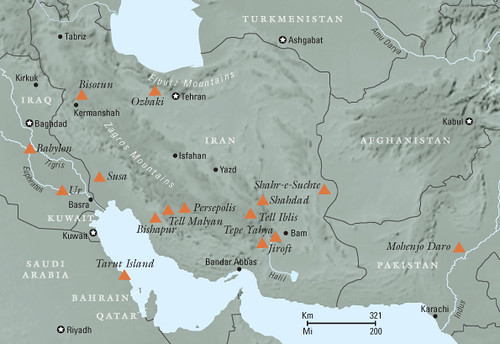In South Eastern Iran, near the city of Jiroft,
archaeologists
uncovered the remains of a large wealthy city some time back. This city
which would have existed around the time of the Harappan civilization was more
than 2 square kilometers and was dominated by a large fortress for protecting
the town.
In one of the tombs, there were burial chambers in which beads and other
precious materials were scattered around. Lapis and turquoise beads, chlorite
and copper vessels were found indicating that the residents were affluent.
While pottery from one site was dated 4000 B.C.E, researchers found a bustling
metropolis nearby dated 2550 – 2400 B.C.E.The affluence of the residents of
this site came from trade. Archaeologists have found lapis from Afghanistan,
shells from Pakistan, vessels from Indus and game boards from Ur in this city.
In the ancient globalized world merchandise from one part of the world used to
be available in another part thanks to these trading posts on the way. Thus if
someone in Mesopotamia or Indus wanted copper from Oman he could get it. If a
housewife in Central Asia wanted an Omani pot to crack on her husband’s head it
would be available in the market. Indus and Mesopotamian seals have been found
in Turkmenistan along with Iranian goods.
The different cities excavated have revealed that they all did not have a
monolithic culture, but they had their own individuality with their own pottery
styles and art.
Three
tablets discovered in the cities had unique iconography and there is debate
on if it was really a writing system.Unlike the ancient civilizations, the one
around Jiroft is not around a river or near the ocean and so it is believed that
bullock carts and camels were used in the over land trade route.
Previously only the civilizations around the Tigris and Euphrates, Nile
and the Indus were mentioned as ancient civilizations.
While Mesopotamia is usually called the cradle of civilization, the
discovery of places like the ancient cities near Jiroft has led to an
expanded
view of the origin of civilization. According to the new view, many
urban centers existed along the arc from Iraq to India and these trading
communities adopted the technologies, architectures and ideas from other
civilizations.
